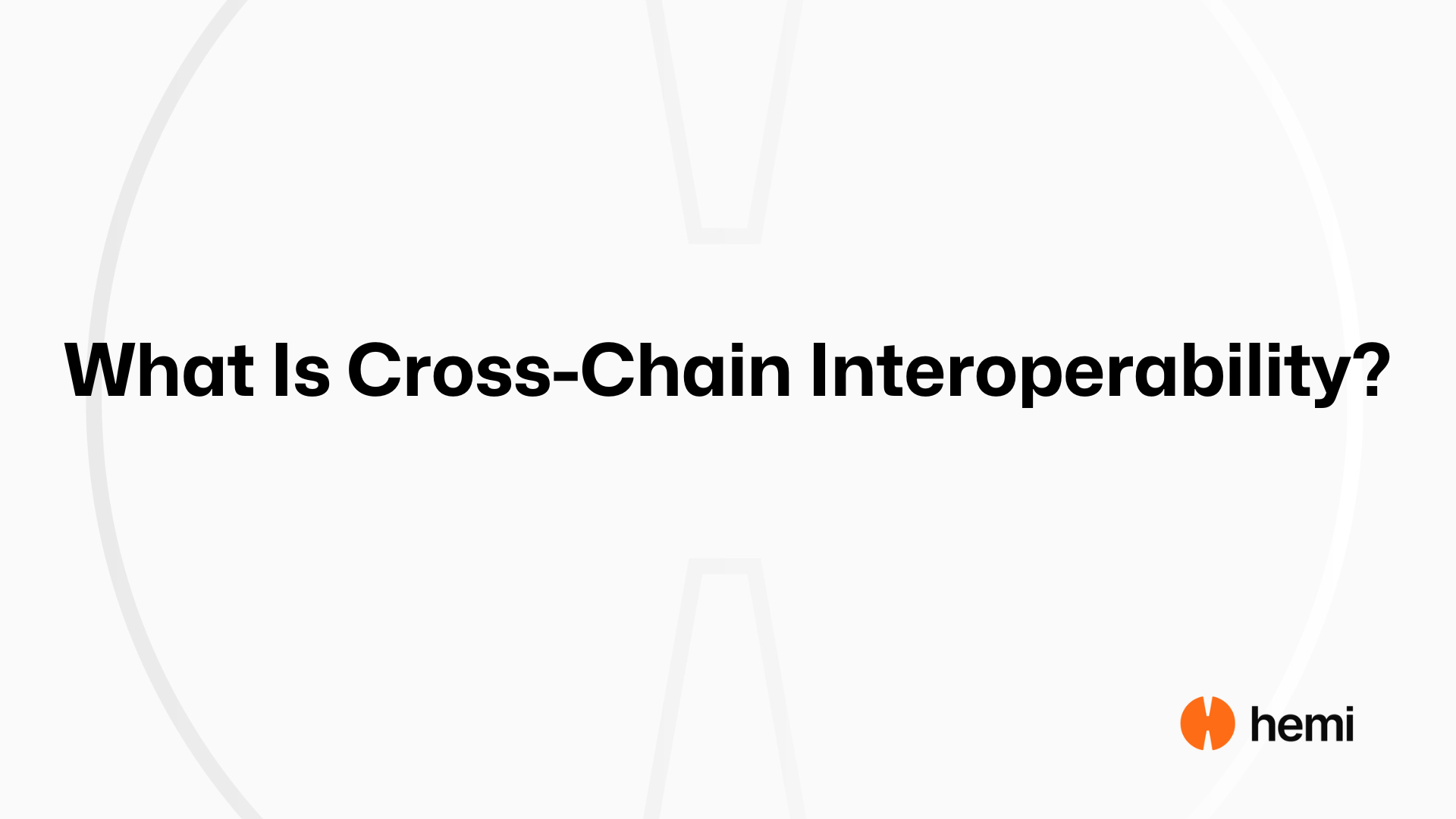- Bitcoin
- Ethereum
- Hemi
- Learn Center
- December 1, 2024
What Is Cross-Chain Interoperability?
How cross-chain interoperability enables blockchains to share data and assets while highlighting the tradeoffs in security, complexity, and trust.

Cross-chain interoperability refers to the ability of different blockchain networks to communicate, exchange data, and move assets between each other without centralized intermediaries. It addresses one of the major limitations in crypto infrastructure: most blockchains operate in isolation, making it difficult for applications and users to interact across chains in a seamless and secure way.
Interoperability is especially important as the number of Layer 1 chains, rollups, and application-specific networks continues to grow. Without interoperability, assets and data are siloed. DeFi becomes fragmented, liquidity is scattered, and users are forced to navigate complex bridges and incompatible standards.
There are several technical approaches to interoperability:
- Token Bridges
These are the most common form of cross-chain connection today. A bridge allows users to lock tokens on one chain and mint a representation on another. This is often done through smart contracts or external validators. However, many token bridges have high trust assumptions and have been major security risks. Some rely on multi-sig wallets or permissioned operators, making them vulnerable to compromise. - Light Clients and Proof-Based Bridges
A more secure model involves verifying consensus from one chain inside another using cryptographic proofs. For example, Ethereum can verify Bitcoin block headers using SPV (Simple Payment Verification), or a rollup can verify its state transitions with zk-proofs. These designs reduce trust assumptions but come with higher complexity and computation costs. - Shared Security Models
Some ecosystems offer native interoperability between chains that share a common validator set. Polkadot and Cosmos are the two main examples. In Cosmos, the Inter-Blockchain Communication (IBC) protocol allows independent chains to pass messages using standard formats and cryptographic commitments. These networks prioritize modularity but depend on the economic and governance structure of the base layer. - Message Passing Protocols
Protocols like LayerZero and Wormhole offer generalized message-passing between chains. Instead of just moving tokens, they let smart contracts call functions across chains. These systems aim for flexibility but vary widely in their trust and security models.
Challenges and Risks
Interoperability adds complexity to security. When a chain depends on another for asset movement or state updates, the failure of one can compromise both. Most major crypto hacks in recent years have involved bridges. The more links in a cross-chain system, the more potential attack surfaces exist.
There’s also the issue of standardization. Different chains have different consensus rules, virtual machines, and fee models. Making them compatible requires wrappers, translators, and additional infrastructure. This adds latency and sometimes weakens the user experience.
Use Cases and Value
Despite the risks, cross-chain systems open up important use cases:
- Unified liquidity across DeFi protocols on different chains
- Cross-chain governance, allowing tokens on one chain to influence systems on another
- Composable applications that combine services from multiple chains into one user-facing product
- Bridging Bitcoin into Ethereum-based DeFi, or vice versa, to unlock value locked in isolated ecosystems
Cross-chain interoperability is central to building an open, modular crypto ecosystem. It allows networks to specialize while remaining connected. But the field is still early. Many current solutions trade off security for convenience, and standardization remains a challenge. The next phase of development will likely focus on reducing trust assumptions, improving verification models, and building more resilient infrastructure for cross-chain coordination. Until then, developers and users need to treat interoperability as a powerful but risky layer in the crypto stack.